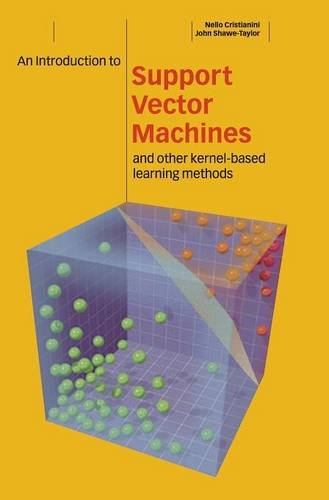An Introduction to Support Vector Machines and Other Kernel-based Learning Methods ebook download
Par johnson margie le jeudi, mai 5 2016, 21:42 - Lien permanent
An Introduction to Support Vector Machines and Other Kernel-based Learning Methods by John Shawe-Taylor, Nello Cristianini


An Introduction to Support Vector Machines and Other Kernel-based Learning Methods John Shawe-Taylor, Nello Cristianini ebook
Publisher: Cambridge University Press
Format: chm
Page: 189
ISBN: 0521780195, 9780521780193
[8] Nello Cristianini and John Shawe-Taylor, “An Introduction to Support Vector Machines and Other Kernel-based Learning Methods”, Cambridge University Press, 2000. We applied three separate analytic approaches; one utilized a scoring system derived from combinations of ratios of expression levels of two genes and two different support vector machines. Shawe-Taylor, An introduction to sup- port vector machines and other kernel-based learning methods (Cambridge: Cambridge University Press, 2000). Predictive Analytics is about predicting future outcome based on analyzing data collected previously. "Boosting" is another approach in Ensemble Method. Introduction The support vector machine (SVM) proposed by Vapnik [1] is a powerful methodology for solving a wide variety of problems in nonlinear classification, function estima- tion, and density estimation, which has also led to many other recent developments in kernel-based methods [2–4]. Machine-learning approaches, which include neural networks, hidden Markov models, belief networks, support vector and other kernel-based machines, are ideally suited for domains characterized by the existence of large amounts of data, . Both methods are suitable for further analyses using machine learning methods such as support vector machines, logistic regression, principal components analysis or prediction analysis for microarrays. It includes two phases: Training phase: Learn a model from training data; Predicting phase: Use the model to predict the unknown or future outcome . Discrimination of IBD or IBS from CTRL based upon gene-expression ratios. A Support Vector Machine provides a binary classification mechanism based on finding a hyperplane between a set of samples with +ve and -ve outputs.
Writing Up Research: Experimental Research Report Writing for Students of English epub